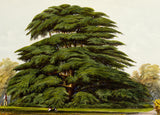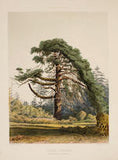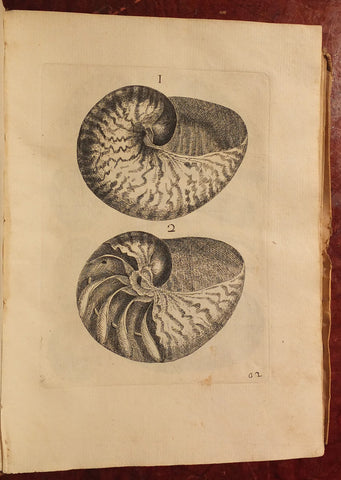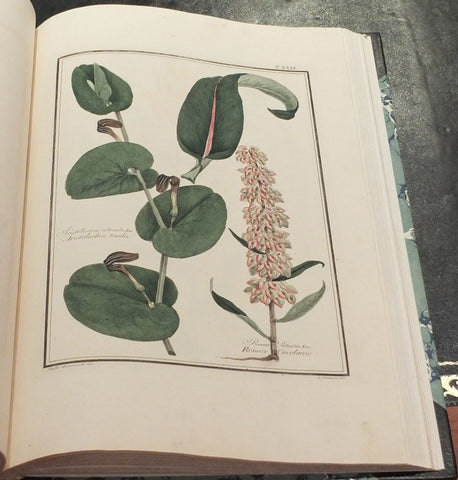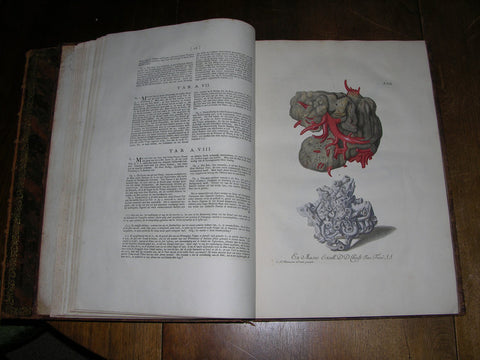Edward James Ravenscroft (1816-1890), The Pinetum Britannicum. A Descriptive Account of Hardy Coniferous Trees Cultivated in Great Britain
Edward James Ravenscroft (1816-1890)
The Pinetum Britannicum. A Descriptive Account of Hardy Coniferous Trees Cultivated in Great Britain
Edinburgh and London: 1863-1884.
3 volumes. Folio (22 4/8 x 18 2/8 inches). 48 hand-colored lithographs after Richard Williamson James Black, R.K. Greville, and J. Wallace, engraved by A. Murray, Robert Black, Fr. Schenk, J. M'Nab and M.T. Masters, 4 mounted albumen photographs by F. Mason, one lithographic plate of maps, and numerous wood-engraved illustrations in the text (all leaves on guards, occasional light spotting). Later half green morocco gilt (extremities a bit worn).
Provenance: with the small ink library stamp of Bolton Public Libraries on the verso of the title-page of each volume.
First edition of one of the great British works on pines, Edward James Ravenscroft's "Pinetum Brittanicum," lavishly illustrated with colorful and refined depictions of many varieties of pine trees from both sides of the Atlantic. Many illustrations portray the trees in parks or other natural settings with human figures included in the compositions, belying Ravenscroft's ostensibly scientific goal in producing the work. Despite the great artistry and esthetic appeal of the images, however, the "Pinetum Brittanicum" is a testament to the great 19th-century fascination with natural history, as well as the impulse to classify and catalogue--two interests that went hand in hand and intensified dramatically over the course of the 1800s. Ravenscroft was one of the great talents to emerge in this period in the field of natural history illustration, combining aspects of beauty and science--normally considered antithetical--with apparently effortless grace.
John Lindley contributed botanical descriptions for the first three parts, and Andrew Murray and Maxwell T. Masters wrote the remainder. Production began with substantial support by Peter Lawson & Son, who subscribed for 100 copies, and by French Emperor Napoleon III, who requested 30. Due to historical and financial upheavals, work on the "Pinetum" was suspended, but resumed again and it was issued complete in 1884. The end result clearly justified the decades-long production, for the scope and quality of Ravenscoft's splendid work on pines remains unmatched. [Nissen BBI 1588; Great Flower Books, p.127; Stafleu and Cowan 8685].
We Also Recommend


